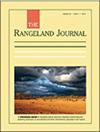从国家抗旱政策到国家抗旱协定:澳大利亚的演变
IF 0.9
4区 环境科学与生态学
Q4 ECOLOGY
引用次数: 4
摘要
澳大利亚制定正式的国家抗旱政策已有近30年的历史。在这段时间里,该政策发生了变化,构成该政策的项目被修改和取代,因为它试图同时解决农场企业的关切和农民家庭的福利需求。支撑政策的既定原则保持相对稳定,重点放在农民自力更生和风险管理上。最近的一次迭代体现在2018年12月的《国家干旱协定》中,其所陈述的意图与1992年的原始政策非常相似。然而,尽管试图将重点放在风险管理上,但该政策在很大程度上仍是由危机驱动的,政策的变化,特别是大笔支出,经常在严重干旱期间宣布。由于在干旱事件期间作出反应的政治必要性与促进农民自力更生和抗旱准备的愿望之间的紧张关系,最初的政策目标是避免临时反应,但没有实现,风险管理/自力更生的主题更多地反映在口头上,而不是政策实质。这些紧张局势反映了在旱灾期间对农民的广泛社区同情和对风险管理方法的期望之间,在干旱支持方面的相互冲突的价值观之间进行平衡的挑战,这种风险管理方法需要长期思考和避免临时政策制定。本文章由计算机程序翻译,如有差异,请以英文原文为准。
From National Drought Policy to National Drought Agreement: the evolution of Australia
Australia has had a formal National Drought Policy for nearly three decades. Over that time, the policy has morphed, with the programs that make up the policy being revised and replaced as it has sought to address both the concerns of the farm business and the welfare needs of farm families. The stated principles underpinning the policy have remained relatively stable, focusing on farmer self-reliance and risk management. The most recent iteration, embodied in a December 2018 National Drought Agreement, is very similar in stated intent to the original 1992 policy. Despite attempts to focus on risk management, however, the policy remains to a large extent crisis driven, with changes to the policy, particularly big-ticket spending, frequently announced during severe drought. As a result of the tension between the political imperative to respond during drought events and the desire to promote self-reliance and drought preparedness among farmers, the original policy’s ambition of avoiding ad hoc reactions has not been achieved, and the risk management/self-reliance theme is reflected more rhetorically than in policy substance. These tensions reflect the challenge of juggling the conflicting values around drought support, between broad community sympathy for farmers which is activated during drought, and aspirations of a risk management approach which requires longer term thinking and the avoidance of ad hoc policy making.
求助全文
通过发布文献求助,成功后即可免费获取论文全文。
去求助
来源期刊

Rangeland Journal
环境科学-生态学
CiteScore
2.90
自引率
8.30%
发文量
14
审稿时长
>36 weeks
期刊介绍:
The Rangeland Journal publishes original work that makes a significant contribution to understanding the biophysical, social, cultural, economic, and policy influences affecting rangeland use and management throughout the world. Rangelands are defined broadly and include all those environments where natural ecological processes predominate, and where values and benefits are based primarily on natural resources.
Articles may present the results of original research, contributions to theory or new conclusions reached from the review of a topic. Their structure need not conform to that of standard scientific articles but writing style must be clear and concise. All material presented must be well documented, critically analysed and objectively presented. All papers are peer-reviewed.
The Rangeland Journal is published on behalf of the Australian Rangeland Society.
 求助内容:
求助内容: 应助结果提醒方式:
应助结果提醒方式:


